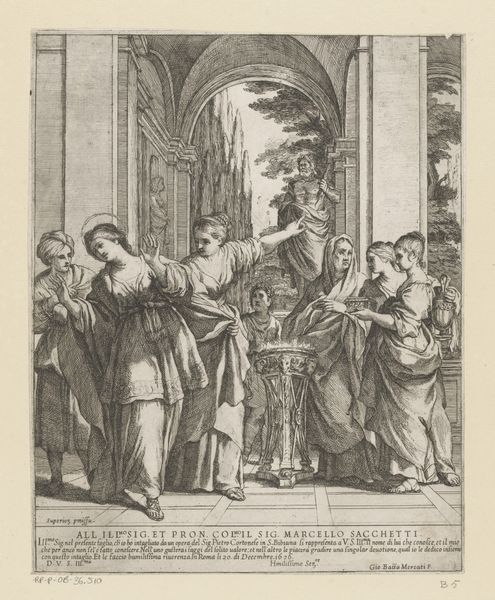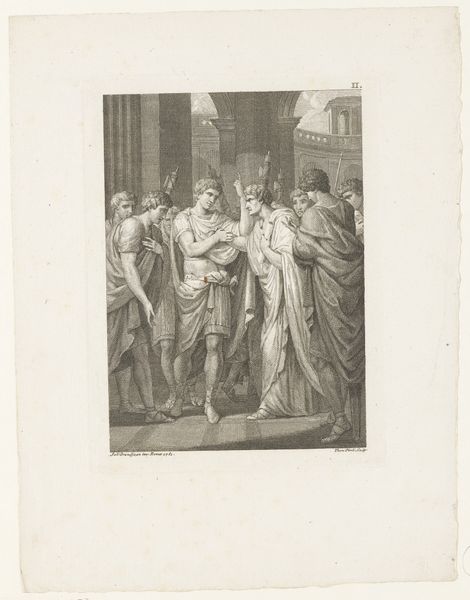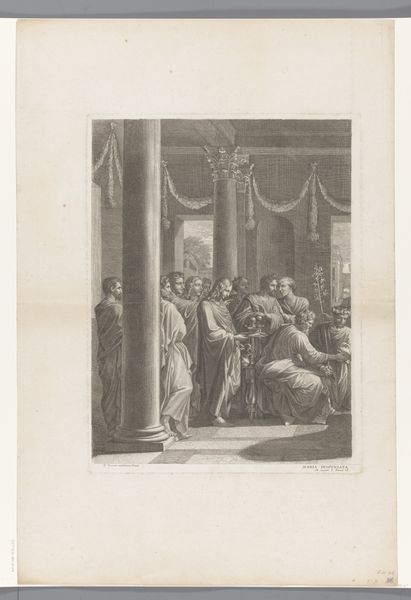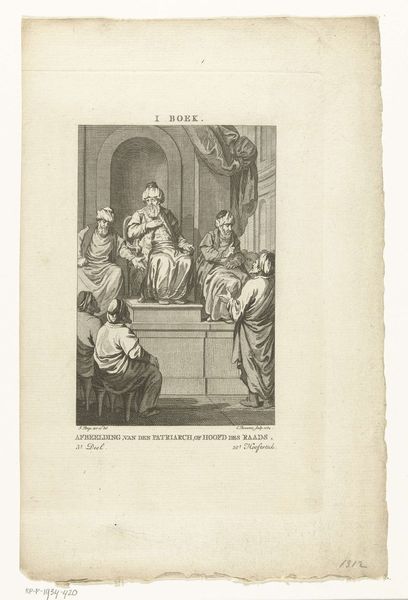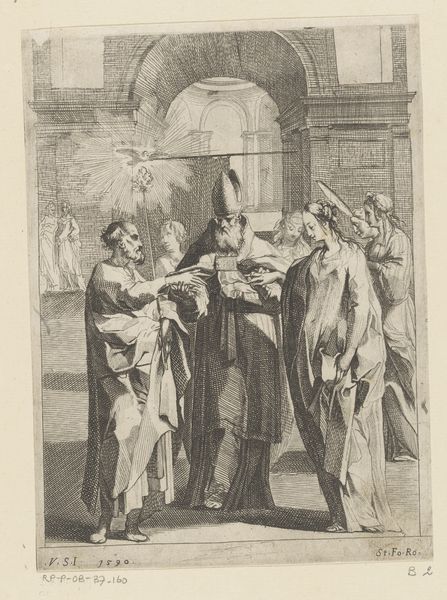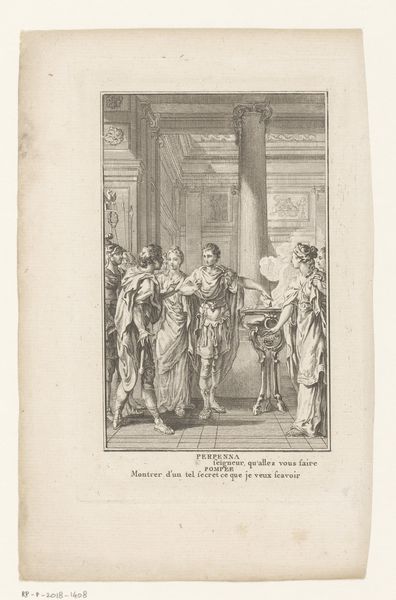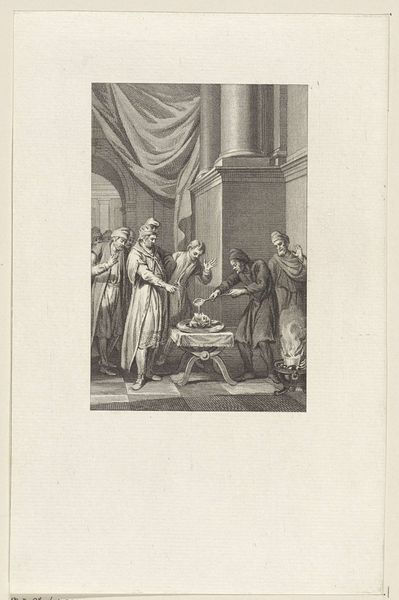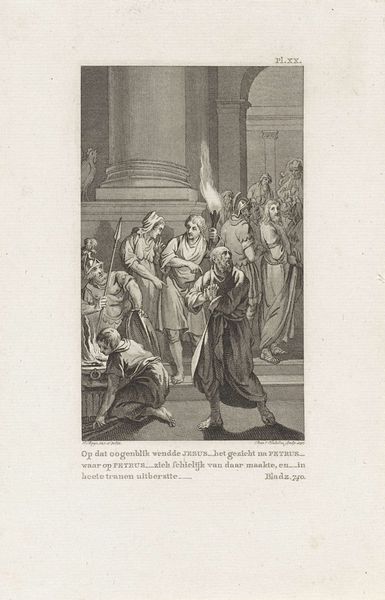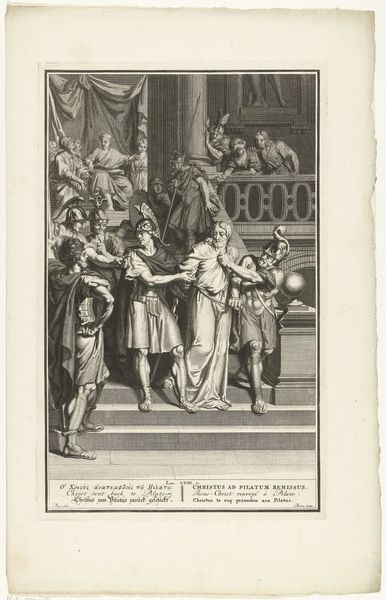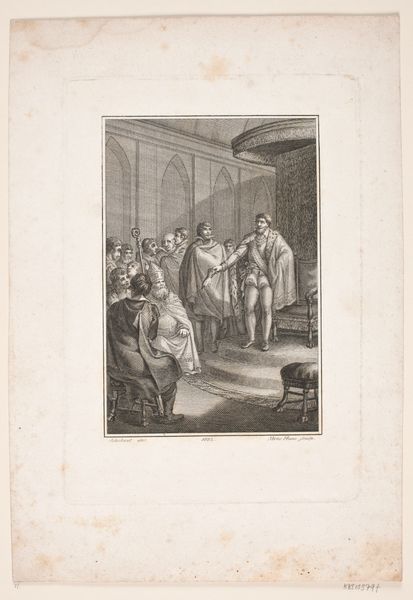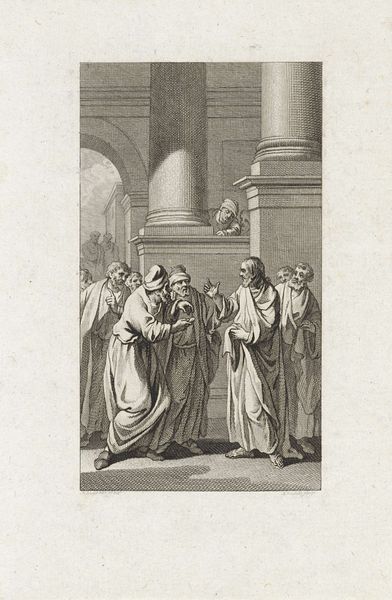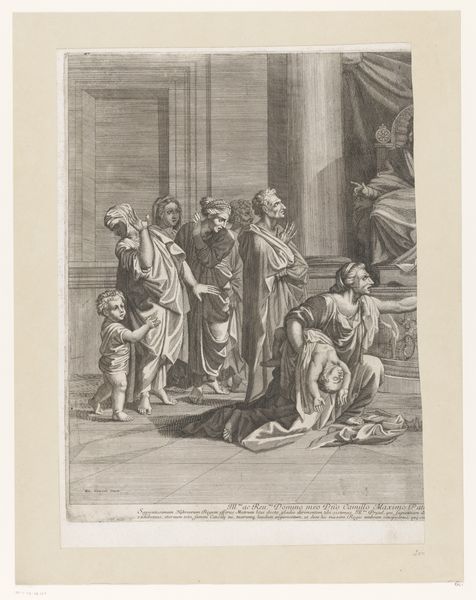
print, engraving
#
neoclacissism
# print
#
old engraving style
#
figuration
#
history-painting
#
engraving
Dimensions: height 166 mm, width 106 mm
Copyright: Rijks Museum: Open Domain
Editor: This is "Scène uit Tite et Bérénice," an engraving by Antoine Radigues dating from 1763-1764. It's got this formal, staged feeling to it. Everyone looks like they're in a play. What do you make of it? Curator: Immediately, I see echoes of Roman virtue and sacrifice rendered through the cool lens of Neoclassicism. The architecture, the togas – it’s all a deliberate visual language. Notice how the figures are arranged; do they remind you of anything? Editor: Hmmm... Like a classical frieze? Curator: Exactly. Radigues pulls from our collective memory, referencing a romanticised Roman past, a history of empire and loss. Look at the faces: a carefully crafted mixture of stoicism and suppressed emotion. It's designed to evoke pathos. Editor: Pathos... so, a deliberate appeal to our emotions? It feels so… restrained. Curator: It is, isn't it? That's the interesting tension of Neoclassicism. It wants to tap into deep emotional wellsprings – love, duty, loss – but through the filter of reason and order. Radigues employs visual shorthand; each figure, each gesture, resonates with loaded significance, telling a story familiar and timeless, but seen through the specific lens of 18th-century idealism. What story do you think it is telling? Editor: Maybe about the burdens of leadership, or love versus duty? I didn't realize how much it was trying to say. Curator: Exactly. It makes you wonder, doesn't it? Radigues uses visual language as a cultural touchstone, something meant to stir something very primal. Editor: I definitely see so much more in it now. Curator: Me too, actually.
Comments
No comments
Be the first to comment and join the conversation on the ultimate creative platform.
